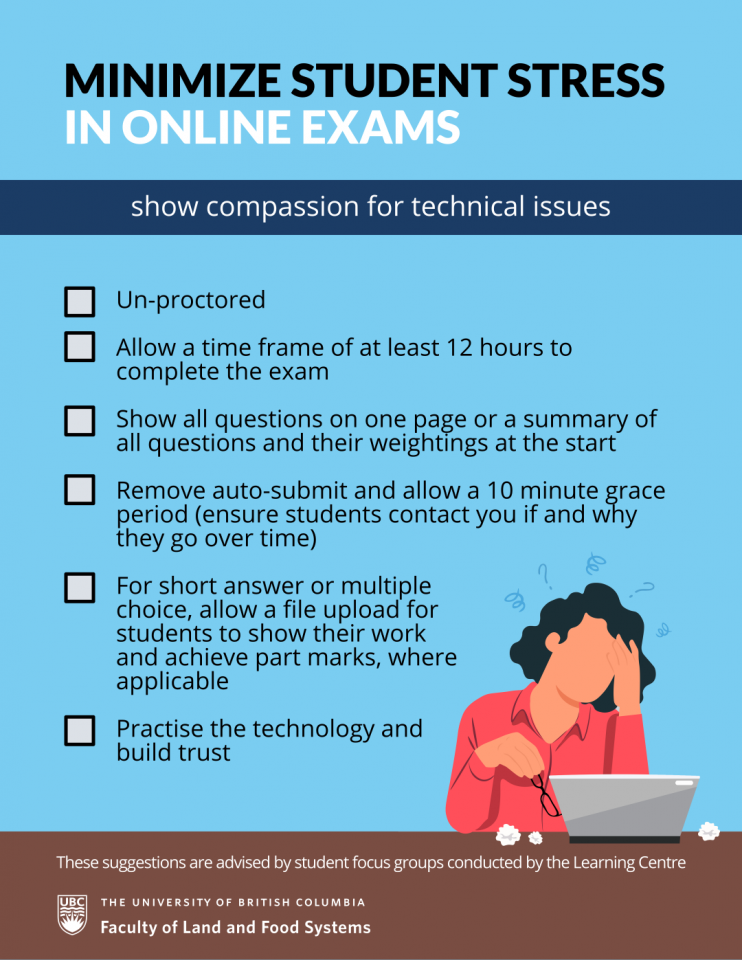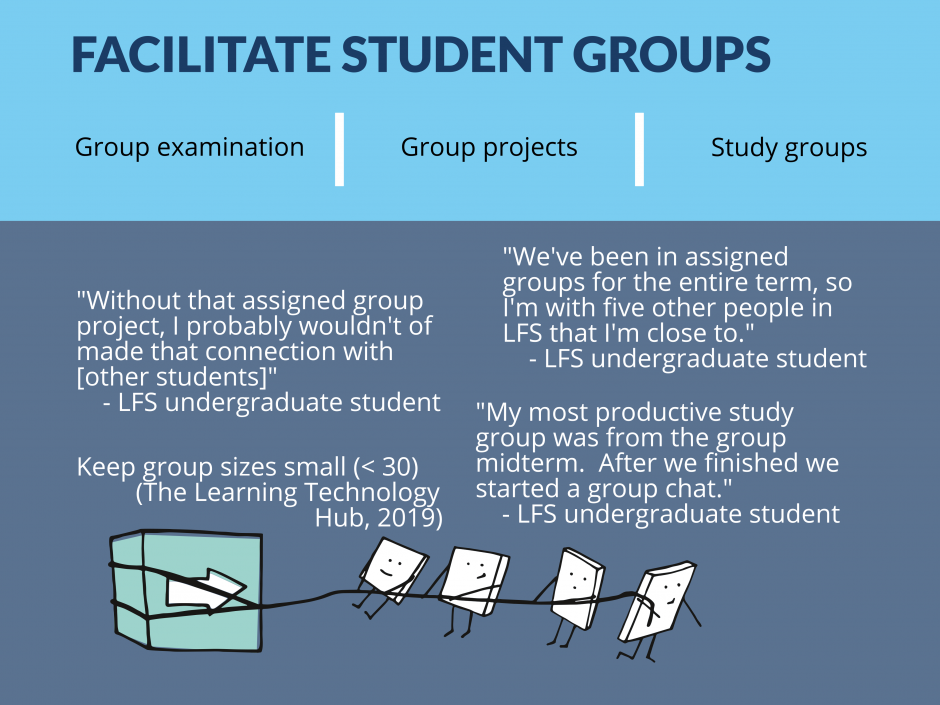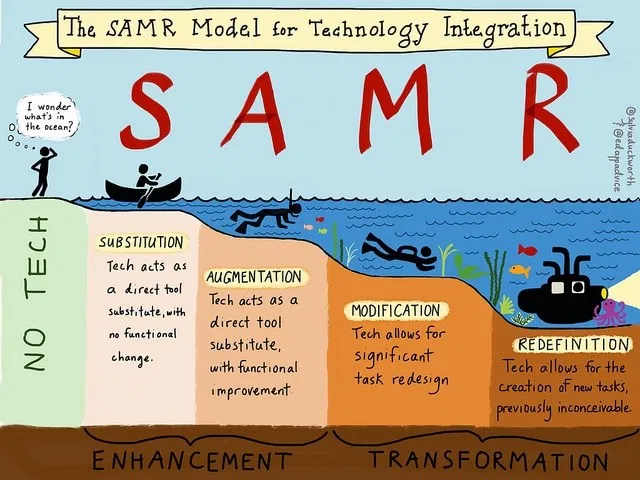This session was held on Friday, January 22 at noon.
In this session we will reflect, share, and learn from each other about the past term. We want to hear your personal experiences from teaching on the topics of lectures, assessments, and community. We will also be sharing what students think about these topics – gathered from the Learning Centre Student Focus groups.
There will be an emphasis on turning our communal knowledge into action – how can we continue to enhance and transform our courses for the online medium?
Post-Event Summary:
Assessments:
The dominant conversation surrounding assessments in an online setting is the unfortunate conflict between reducing student stress and upholding academic integrity.
Students have made their voice loud and clear to use alternative to Proctorio. So what we can do instead?
Some options include:
- Open book tests
- An emphasis on higher order thinking (i.e. not memorizing)
- Use a lockdown browser without webcam or audio recording

Randomize Questions
Richard Barichello shared his technique: Their short answer component of their assessment consist of a question bank that is 5-6 times larger than the number of questions students had to answer. Each of those questions is categorized to ensure that each student is assessed on the breadth of the course topics. Some questions would be difficult and some easier, despite Richard’s best efforts, so each question’s grade was weighted depending on what the average for that question was compared to the overall average across all questions in that category. Richard even asked students if this was fair and the results were an ~3:1 preference in favour of this technique!
It’s a solution that works well but be warned – it is labour intensive.
Two-stage exams:
Some of our instructors in LFS are exploring the use of two-stage exams!
“In a two-stage exam, students first complete and turn in the exam individually and then, working in small groups, answer the exam questions again. During the group part students receive immediate, targeted feedback on their solutions from their fellow students and see alternative approaches to the problems. This makes the exam itself a valuable learning experience while also sending a consistent message to the students as to the value of collaborative learning.” (Wieman, 2014)
See this video on a two-stage exam in action. Students are engaged, talk, and debate like professionals!
The Learning Centre is happy to help out if you would like support to develop your own two-stage exam.
Learn more here: https://cwsei.ubc.ca/sites/default/files/cwsei/resources/instructor/Two-stage_Exams.pdf
And here: http://blogs.ubc.ca/catherinerawn/2014/07/22/two-stage-exam-introduction-and-resources/
Community:
In a physical setting, community can occur spontaneously, but in online environment, we need to provide deliberate opportunities to form community.
‘Hang out in the Hallway’
Before and after class, keep the Zoom room open for interactions. Students can discuss with one another or ask the instructor and TAs questions.
Facilitate student groups
Students are having a hard time meeting each other. Including groups into your class can encourage community.
The approach to group formation delved into some interesting concepts. Do we randomize groups constantly? Do we keep groups constant the whole term? Is there a balance?
Randomizing groups always ensures students are not ‘stuck’ with people they do not like or get along with, but in the ‘real’ world, your colleagues do not change constantly and you need to learn to work well them. Keeping groups consistent the whole term can also allow for students to get close with one another. One example of a happy medium, practised by a LFS instructor, is too keep groups consistent, but to change them each month.

These quotes are from student focus groups conducted by the Learning Centre in 2020W1
Breakout Rooms:
The Learning Centre is able to support you in utilizing breakout rooms for your class. Specifically, the student self-assign option. https://lc.landfood.ubc.ca/using-the-self-assign-option-for-participants-in-zoom-breakout-rooms/
SAMR Model:
The SAMR model is a framework to help us understand the role of technology and how it may affect a given function or task.

Source: https://twitter.com/sylviaduckworth/status/583777293366988801
We can use this framework to help imagine at what stage we are in with our use of technology. An important thing to note with this model, is that it is indeed a progression and adapting to the use of technology takes a lot of slow, little steps.
The end of the progression, ‘redefinition, is not always where we want to be! Often times, the ‘substitution’ step is what best suits our needs. Keep in mind, that without actually progressing down the path you may not know what new tasks technology can allow for.